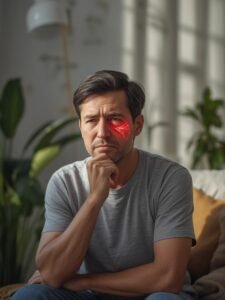Acupressure for Digital Eye Strain: The Ultimate Guide to Relieving Screen Time Fatigue
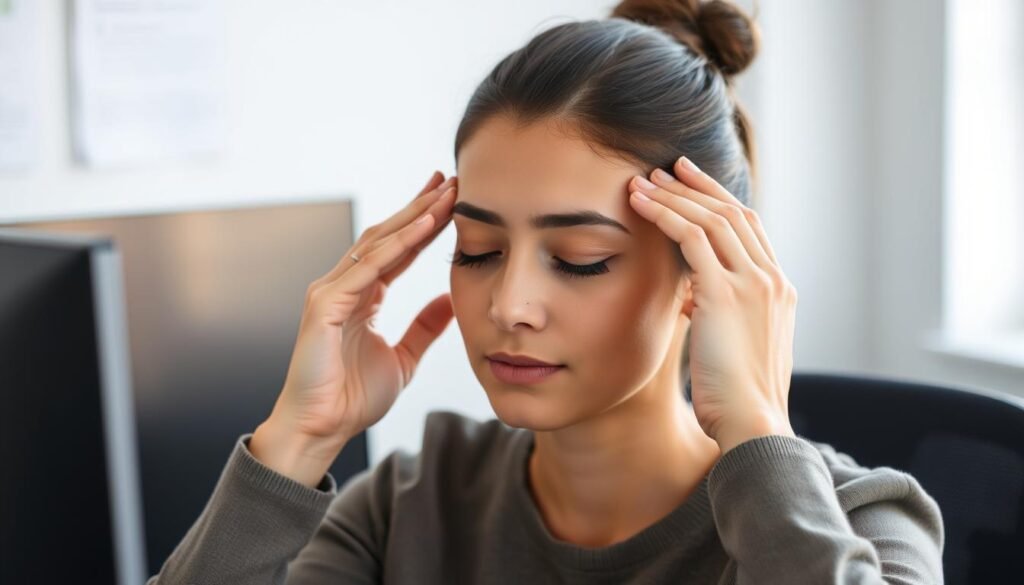
In our digital-first world, most of us spend hours staring at screens daily. This constant visual focus takes a toll, leaving many with tired, dry eyes, blurred vision, and tension headaches. While eye drops offer temporary relief, acupressure provides a natural, effective solution by targeting specific pressure points that have been used for centuries in Traditional Chinese Medicine (TCM). This guide explores how these ancient techniques can address modern digital eye strain, combining anatomical insights with practical routines you can implement immediately.
Understanding Digital Eye Strain: Beyond the Screen
Digital eye strain (DES) affects an estimated 75% of people who work with screens regularly—that’s nearly 60 million people worldwide. The average adult spends the equivalent of 34-44 years looking at screens over their lifetime, making this condition increasingly common.
Common Symptoms of Screen Fatigue
Digital eye strain manifests through several uncomfortable symptoms that can impact your productivity and quality of life:
- Dry, irritated eyes that feel gritty or burn
- Blurry vision that fluctuates throughout the day
- Tension headaches, particularly around the temples and forehead
- Neck and shoulder pain from poor posture while viewing screens
- Difficulty focusing or concentrating after extended screen time
- Increased sensitivity to light, especially from digital displays
The TCM Perspective on Eye Strain
Traditional Chinese Medicine offers a unique understanding of eye strain that complements modern science. In TCM, the eyes are connected to the Liver meridian, which stores Blood and is responsible for the smooth flow of Qi (energy) throughout the body. Extended screen time depletes Liver Blood and strains the Kidney Essence, which nourishes the eyes.
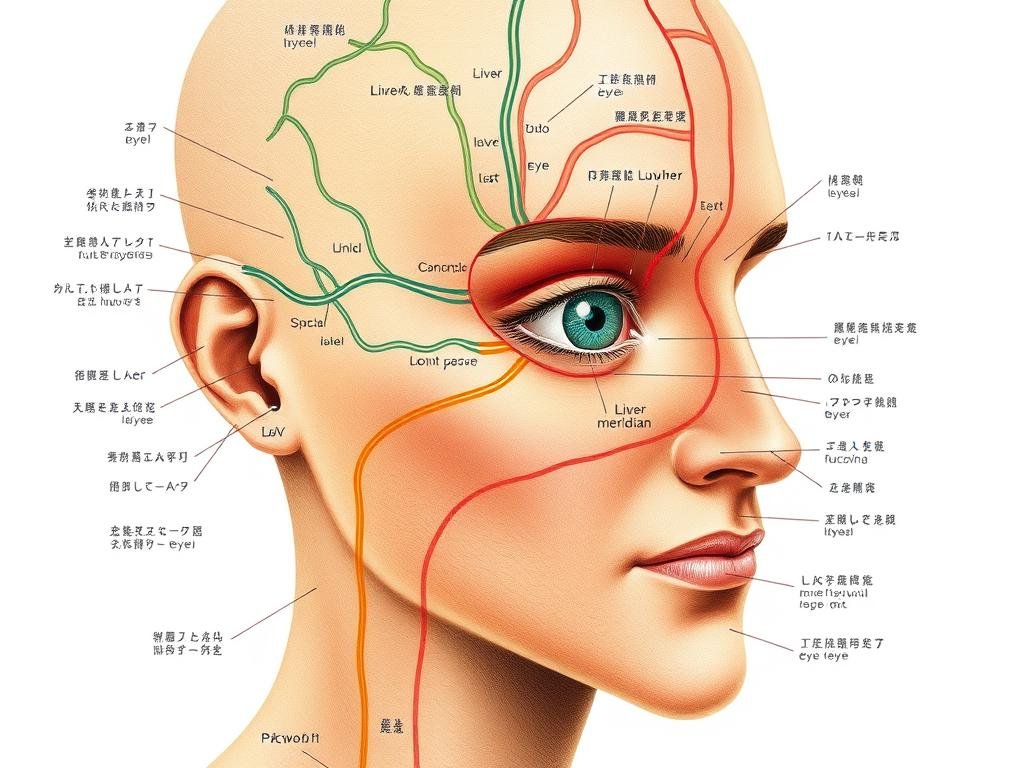
When these systems become imbalanced through overuse, symptoms of eye strain emerge. Acupressure works by stimulating specific points along these meridians to restore balance, improve blood circulation, and relieve tension in the surrounding muscles.
Acupressure vs. Traditional Eye Drops
While eye drops provide immediate moisture, they often address only the symptom (dryness) rather than the underlying causes of eye strain. Acupressure offers several advantages:
Eye Drops
- Temporary relief of dryness
- May contain preservatives that irritate over time
- Addresses symptoms only
- Requires repeated application
Acupressure
- Improves blood circulation to the eyes
- Relaxes surrounding muscles to reduce tension
- Stimulates natural tear production
- Addresses underlying energy imbalances
The Foundation Routine: 3 Essential Local Points for Immediate Relief
These three key acupressure points form the foundation of any effective eye strain relief routine. When stimulated correctly, they can provide immediate relief from discomfort.
BL1: Jing Ming (Bright Eyes)
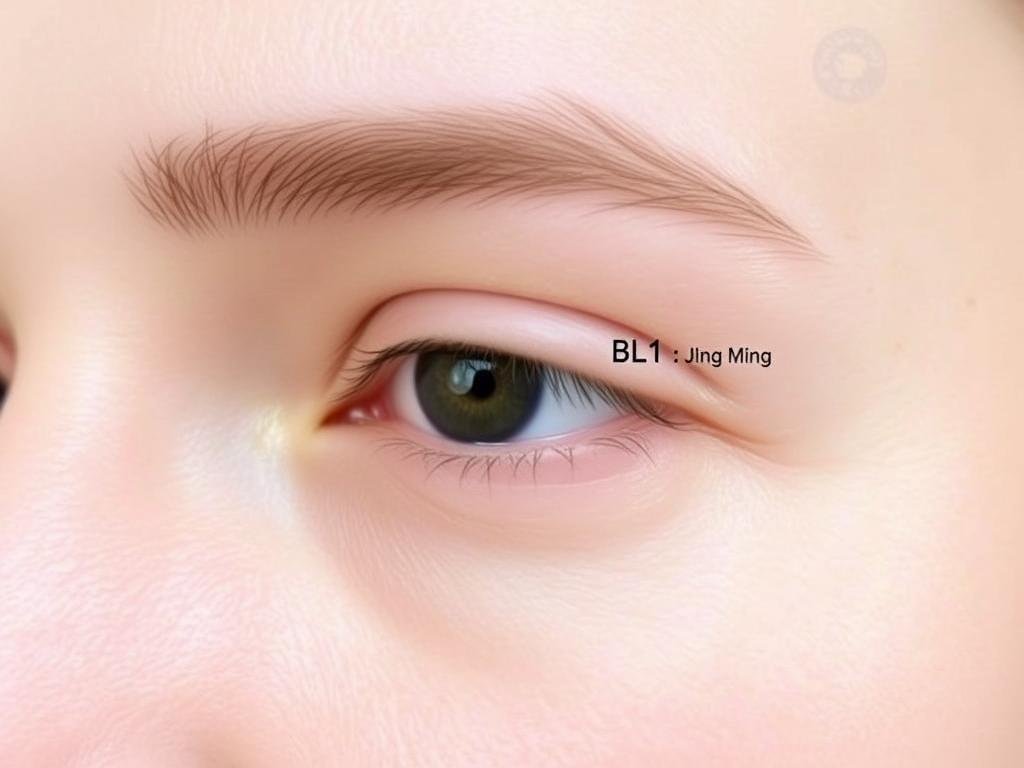
Location: In the small depression at the inner corner of each eye, beside the bridge of the nose.
Technique: Using your index fingers, apply gentle pressure for 30 seconds while taking deep breaths. The pressure should be firm but not painful.
Primary Benefit: Relieves eye dryness, redness, and itchiness.
Anatomy Insight: This point targets the procerus muscle and orbital rim, helping to release tension that restricts blood flow to the eyes.
Yuyao (Fish Waist)
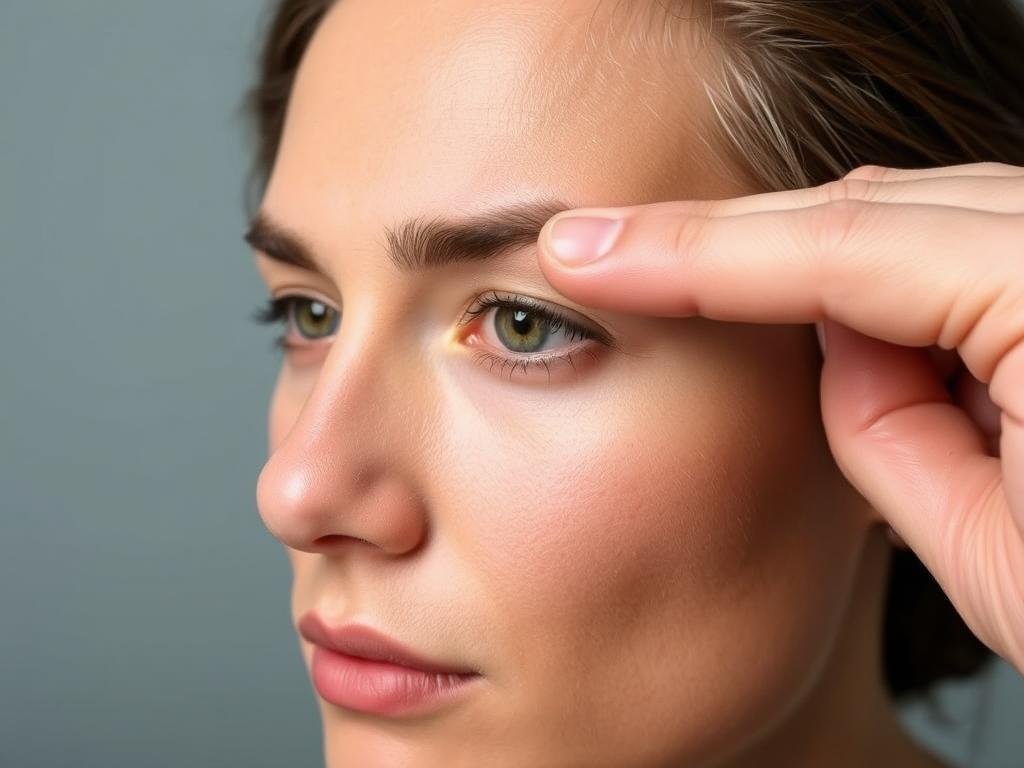
Location: In the middle of the eyebrow, directly above the pupil when looking straight ahead.
Technique: Apply moderate pressure in small circular motions for 1 minute on each side.
Primary Benefit: Alleviates frontal headaches and eyebrow tension.
Anatomy Insight: This point targets the corrugator supercilii muscle, which is often contracted during screen focus, causing tension headaches.
TE23: Si Zhu Kong (Silk Bamboo Hole)
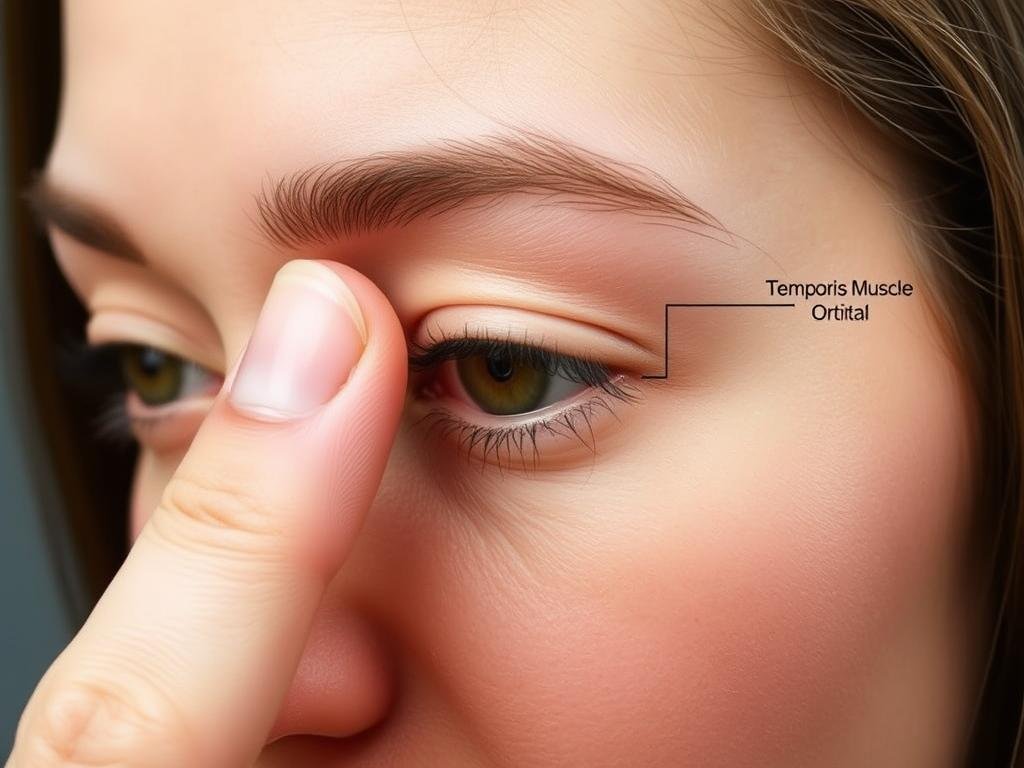
Location: At the outer end of the eyebrow, in a small depression.
Technique: Press firmly for 30 seconds, release for 5 seconds, then repeat 3 times.
Primary Benefit: Relieves lateral eye tension and temporal headaches.
Anatomy Insight: This point affects the temporalis muscle and lateral orbital rim, areas that tense during extended focus.
The Systemic Protocol: Distal Points for Deep-Rooted Relief
While local points provide immediate relief, distal points address the underlying TCM imbalances that contribute to chronic eye strain. These points are located away from the eyes but have powerful effects on eye health.
LR3: Tai Chong (Great Rushing)
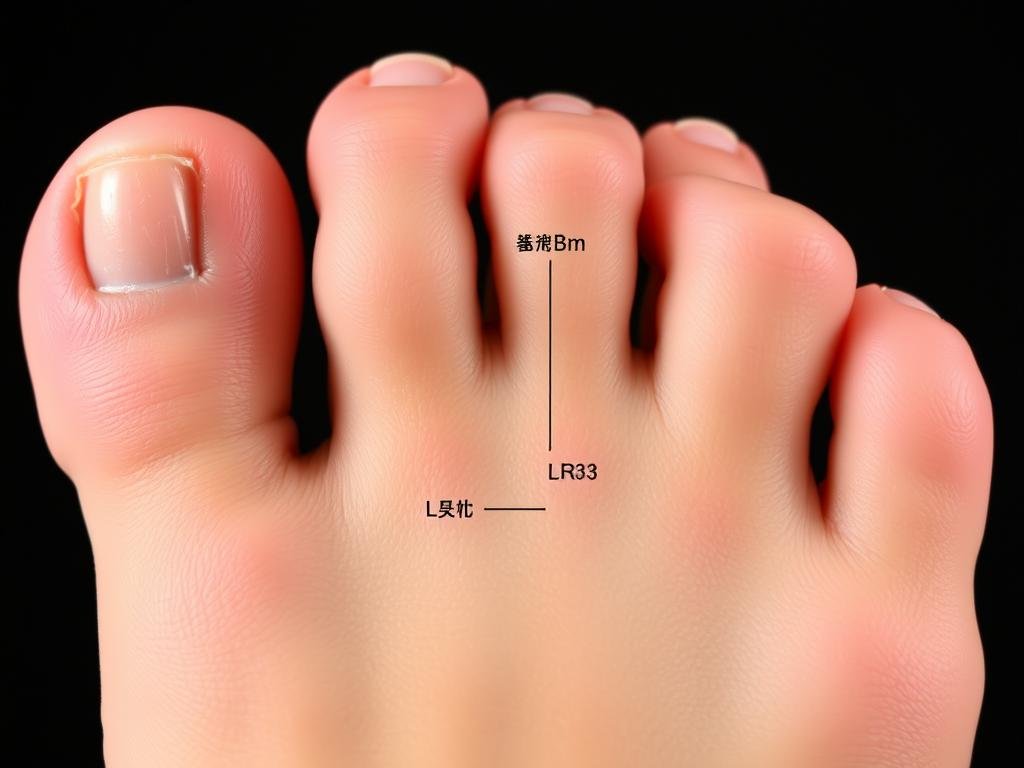
Location: On the top of the foot, in the depression between the first and second metatarsal bones.
Technique: Apply firm pressure with your thumb for 1-2 minutes on each foot.
TCM Connection: This point regulates Liver Qi and Blood, which directly nourish the eyes. In TCM, red, irritated eyes are often associated with Liver Blood stagnation.
For optimal results, pair LR3 with BL1 when experiencing dry, red, or irritated eyes.
LI4: Hegu (Union Valley)
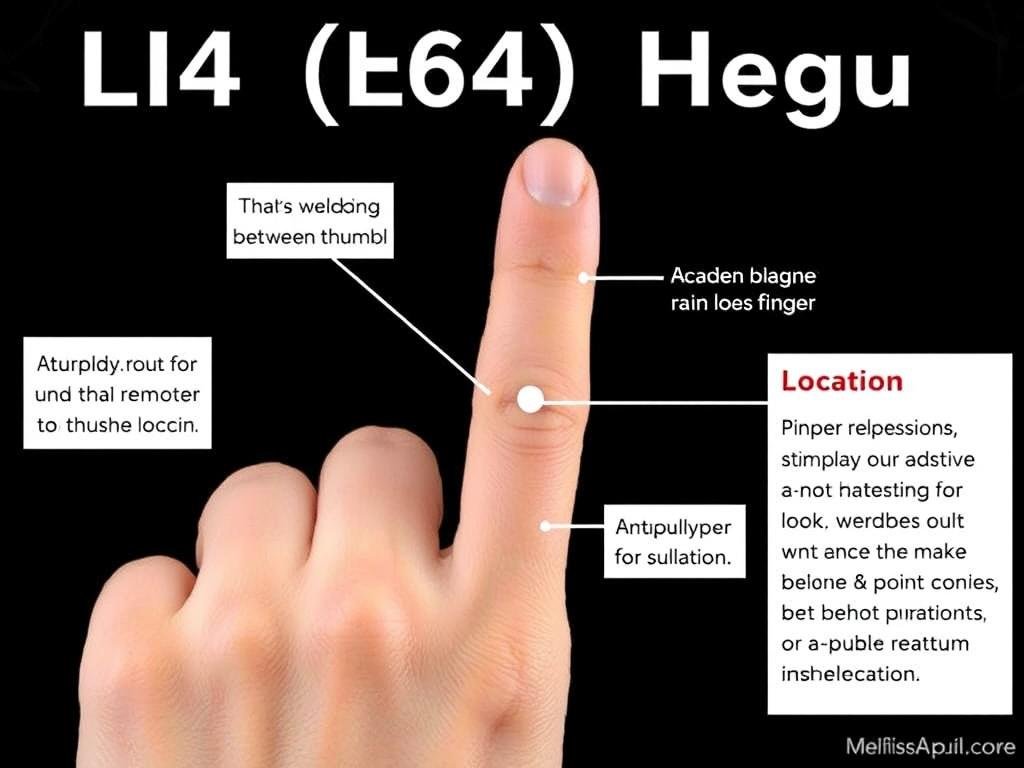
Location: In the webbing between your thumb and index finger, at the highest point of the muscle when these digits are brought close together.
Technique: Apply firm pressure with the opposite thumb for 1 minute, then switch hands.
TCM Connection: This point has powerful anti-inflammatory properties and helps clear Heat from the face and eyes. It’s particularly effective for headaches that accompany eye strain.
Combine LI4 with Yuyao for tension headaches and neck pain related to screen use.
Get Your Complete Acupressure Protocol Guide
Download our printable guide with detailed illustrations of all pressure points and a 7-day routine designed to progressively relieve digital eye strain.
The Custom 5-Minute Acupressure Routine
These targeted routines address specific symptoms of digital eye strain. For best results, perform your chosen routine twice daily and whenever symptoms flare up.
Routine 1: For Dry, Irritated Eyes
| Point | Duration | Technique | Breathing |
| BL1 (Jing Ming) | 30 seconds | Gentle pressure | Slow, deep breaths |
| LR3 (Tai Chong) | 1 minute each foot | Firm pressure | Focus on exhale |
| Jingming (inner corner) | 30 seconds | Very gentle touch | Normal breathing |
Routine 2: For Tension Headaches and Neck Pain
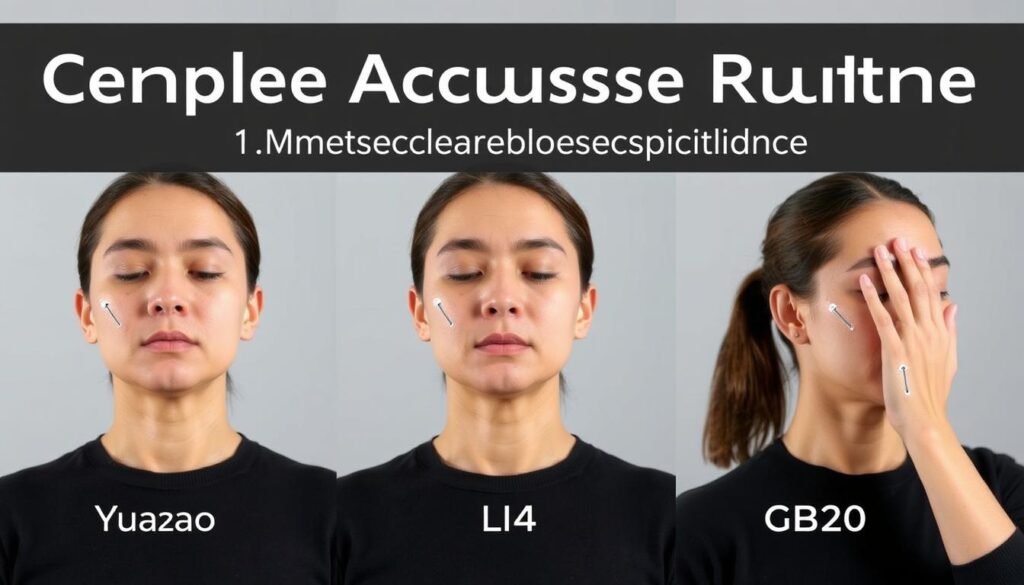
| Point | Duration | Technique | Breathing |
| Yuyao (middle eyebrow) | 1 minute each side | Circular motion | Deep, slow breaths |
| LI4 (Hegu) | 1 minute each hand | Firm pressure | Focus on inhale |
| GB20 (base of skull) | 2 minutes | Upward pressure | Exhale during pressure |
Routine 3: The Bedtime Wind-Down for Better Sleep
Screen use before bed can disrupt sleep patterns. This routine helps transition your eyes and mind from digital stimulation to restful sleep:
- Begin with gentle palming: Rub hands together until warm, then place palms over closed eyes for 1 minute
- Press BL1 points for 30 seconds while taking deep breaths
- Massage Tai Yang (temple points) in circular motions for 1 minute
- Finish with Anmian point (behind the ear) for 1 minute to promote sleep
Maximizing Results: Technique, Duration, and Safety
The 20-20-20 Acupressure Rule
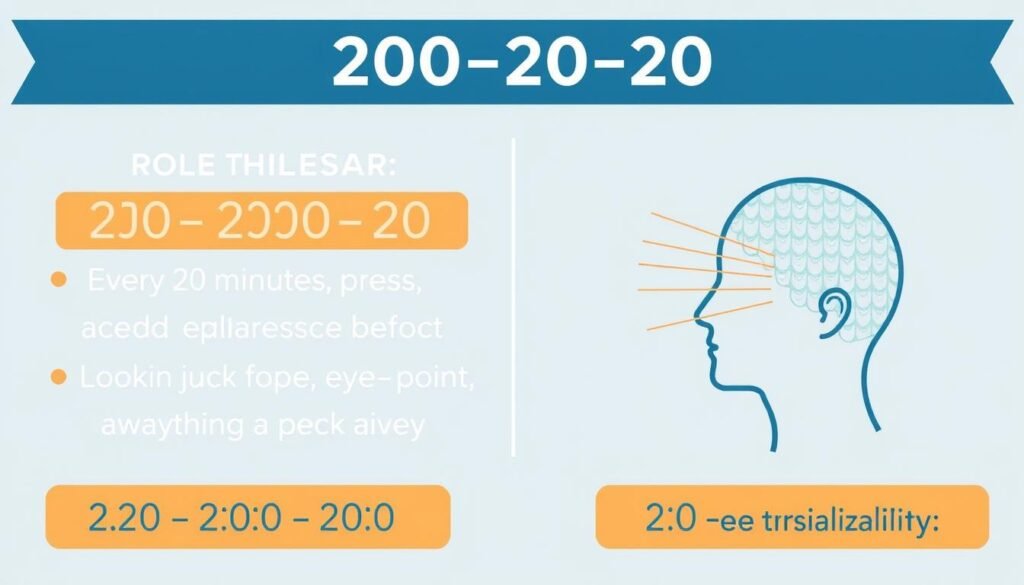
Enhance the traditional 20-20-20 rule (every 20 minutes, look 20 feet away for 20 seconds) by adding acupressure:
- Every 20 minutes of screen time, take a 20-second break
- Look at something 20 feet away to relax eye focus
- While looking away, press the Yuyao point for 20 seconds
- Take 3 deep breaths before returning to your screen
Pressure Matters: Finding the “De Qi” Sensation
In TCM, the “De Qi” sensation indicates effective stimulation—a feeling of heaviness, warmth, or mild tingling. Your pressure should be:
- Firm enough to feel a distinct sensation (not pain)
- Gentler around the eye area (BL1, Jingming)
- More substantial on distal points (LR3, LI4)
- Adjusted based on individual sensitivity
When NOT to Use Acupressure: Safety Guidelines
Consult a healthcare provider before using acupressure if you have:
- Uncontrolled glaucoma or recent eye surgery
- Retinal detachment or severe eye conditions
- Pregnancy (certain points like LI4 are contraindicated)
- Skin infections or inflammation in the areas to be pressed
Beyond Acupressure: Holistic Strategies for Vision Health
Nutritional Support for Eye Health

Complement your acupressure routine with these vision-supporting nutrients:
Vitamin A
Found in carrots, sweet potatoes, and leafy greens. Supports retinal health and prevents night blindness.
Omega-3 Fatty Acids
Found in fatty fish, flaxseeds, and walnuts. Reduces dry eye symptoms and inflammation.
Lutein & Zeaxanthin
Found in kale, spinach, and eggs. Filters harmful blue light and reduces oxidative damage.
The Power of Palming and Eye Exercises
Combine these techniques with your acupressure routine for enhanced results:
- Palming: Rub hands together until warm, then gently cup over closed eyes for 1-2 minutes, allowing the heat to relax eye muscles
- Near-Far Focus: Hold your thumb 10 inches from your face, focus on it for 15 seconds, then shift focus to something 20 feet away for 15 seconds
- Eye Rolling: Slowly roll your eyes in clockwise circles 5 times, then counterclockwise 5 times
- Blinking Exercise: Blink rapidly for 10-15 seconds, then close eyes tightly for 5 seconds and release
Ergonomics Checklist for Digital Eye Health
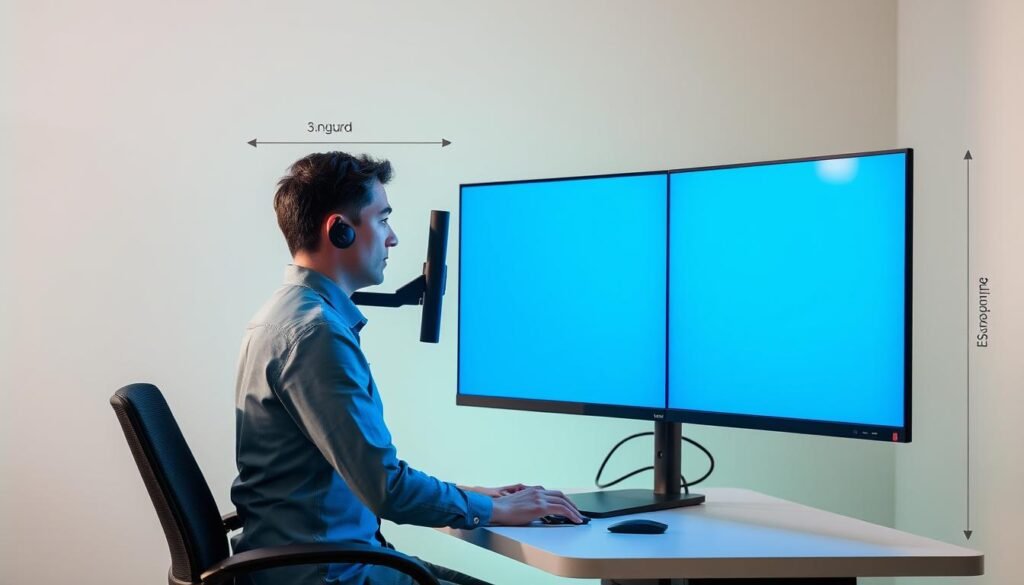
- Position your screen at arm’s length and slightly below eye level
- Ensure proper lighting that doesn’t create glare on your screen
- Use blue light filtering glasses or screen protectors
- Maintain proper posture to reduce neck strain that contributes to eye fatigue
- Adjust screen brightness to match your surrounding environment
Integrating Acupressure Into Your Daily Digital Life
Digital eye strain doesn’t have to be the price we pay for modern living. By incorporating these acupressure techniques into your daily routine, you can maintain eye health even with regular screen use. Start with the foundation points, experiment with the custom routines, and gradually build a practice that works for your specific symptoms.
Remember that consistency is key—even a few minutes of acupressure daily can yield significant improvements in comfort and visual stamina. Your eyes work hard for you; these techniques are a way to return the favor.
Need Personalized Guidance?
If you’re experiencing persistent eye strain or want a customized acupressure protocol, consider consulting with a licensed TCM practitioner.

